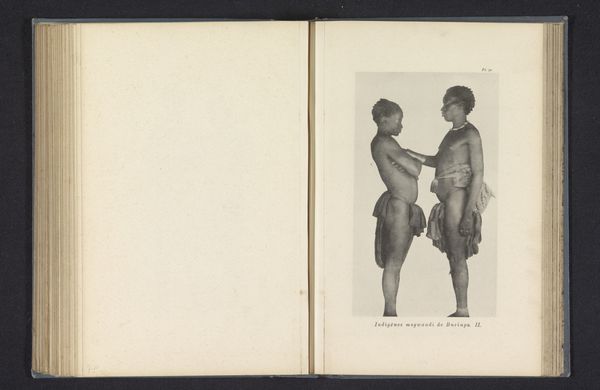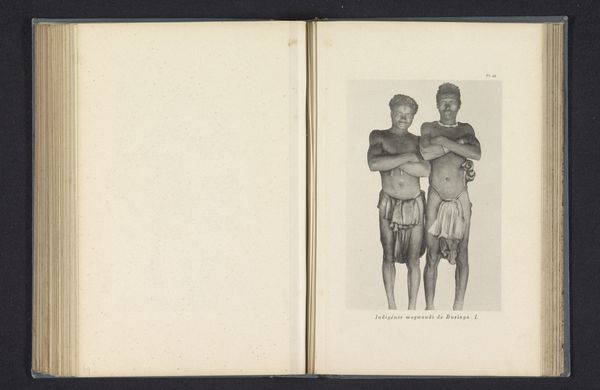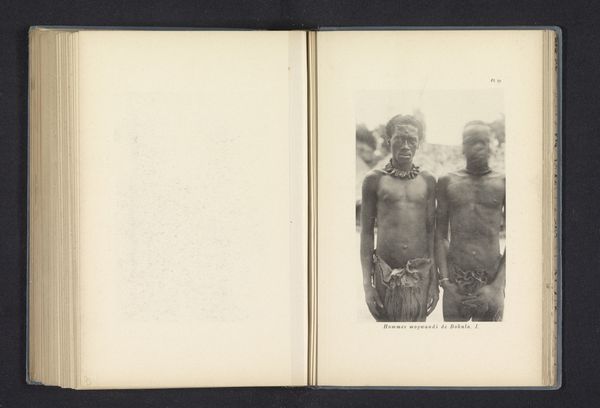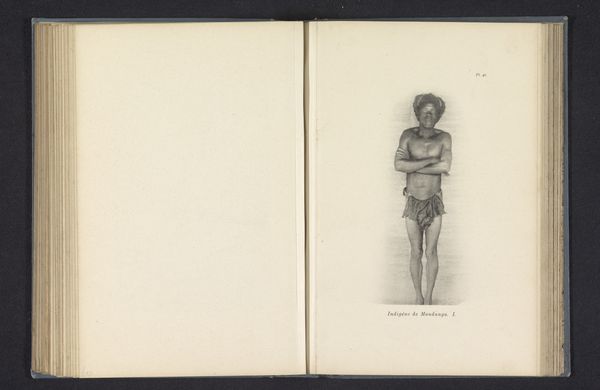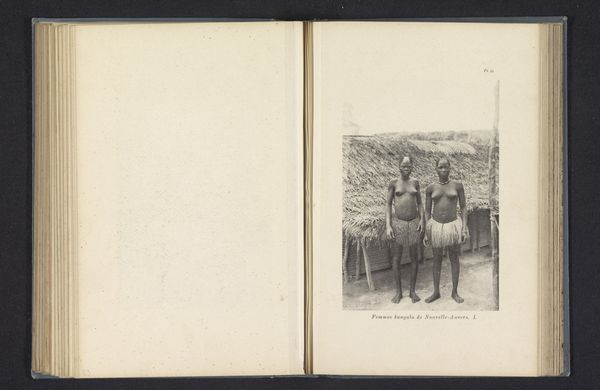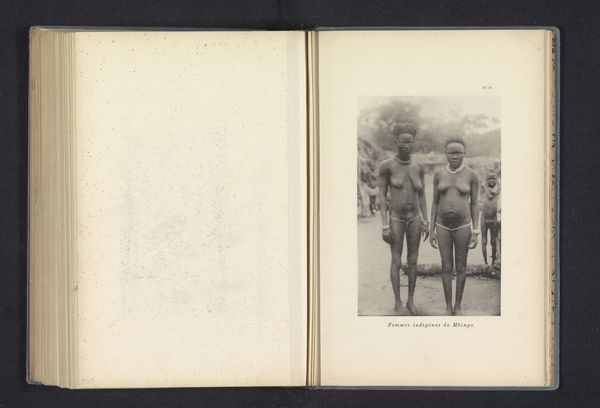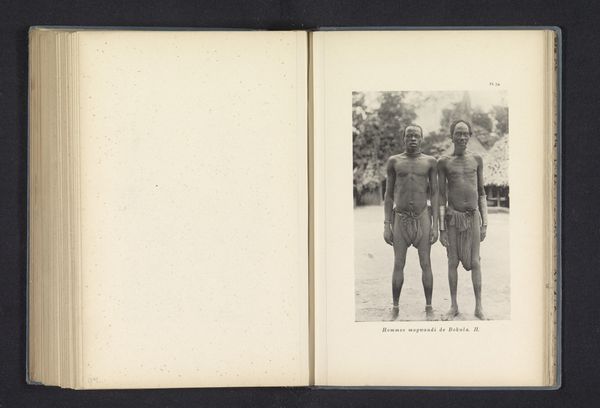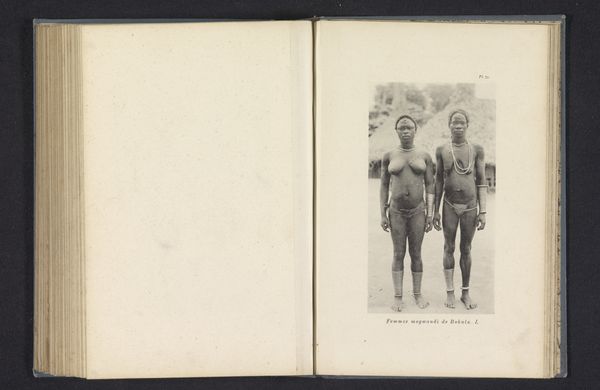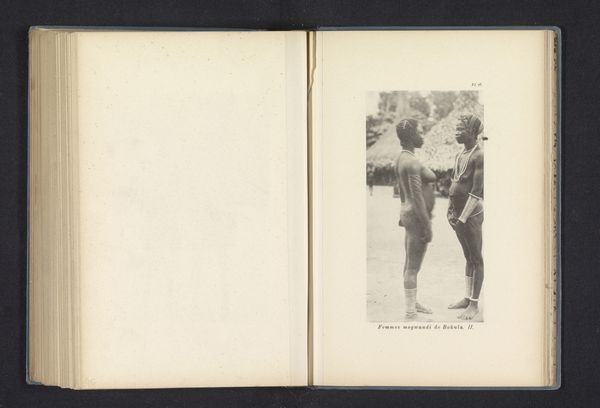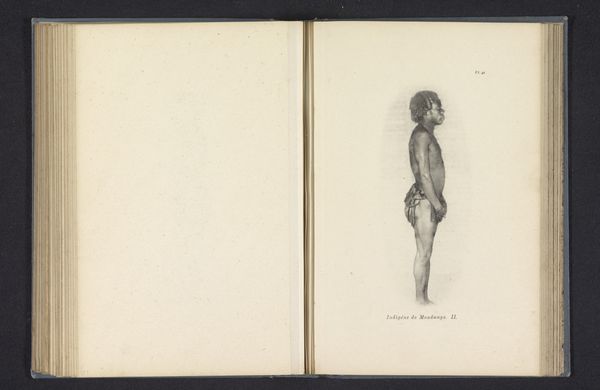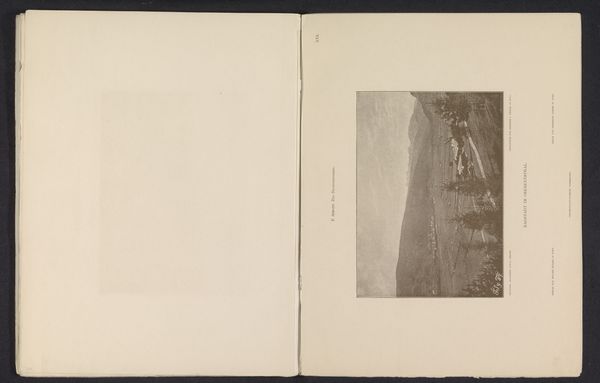
gelatin-silver-print, photography, gelatin-silver-print
#
portrait
#
gelatin-silver-print
#
photography
#
gelatin-silver-print
Dimensions: height 162 mm, width 110 mm
Copyright: Rijks Museum: Open Domain
Curator: This gelatin silver print, dating back to 1896, is entitled "Portret van drie mannen van de Banza te Bogolo," taken by Franz Thonner. Editor: Wow, my first impression is that it's incredibly striking how these men seem both self-assured and also somewhat vulnerable. The light is fascinating—almost like a theatrical stage lighting them. It definitely draws my eye to their expressions and the details of their adornments. Curator: The work sits at an intersection of portraiture and what we might consider, through a postcolonial lens, ethnographic documentation. Consider the power dynamics at play: the photographer, presumably European, capturing the likenesses of indigenous men. How are their identities being shaped and mediated through this photographic encounter? Editor: Absolutely. It’s hauntingly beautiful, but I’m also grappling with this deep-seated awareness of the historical context and the potential for misrepresentation. Like, how much agency did these men actually have in how they were being presented, and what purpose did this serve for Thonner's audience? It all feels a little…icky, doesn’t it? Curator: Precisely. This photograph invites us to critically examine the gaze itself—the way the 'Other' has been historically framed and consumed. Thinking about feminist theory, whose gaze is centered here, and how does it affect the perception of these men? Their stories are inevitably complex, intersecting with colonial histories, economic systems, and local traditions that the photograph barely hints at. Editor: I also can’t help thinking about materiality—the way the gelatin silver print feels so distant and antiquated. You know, what these three men might think of it if they could see it now. Or about Thonner for that matter, the type of cameras he probably carried around in the Congo. I feel like all photographs carry such immense weight because they always hold more questions than they ever answer. Curator: That's a great point. Hopefully, engaging with images like this—recognizing the intricate threads of identity, power, and history—allows us to build more respectful and conscientious narratives moving forward. Editor: Yeah. It's important to keep talking, keep asking, keep doing the work to challenge these historical visual representations. Thanks for taking this closer look with me.
Comments
No comments
Be the first to comment and join the conversation on the ultimate creative platform.
